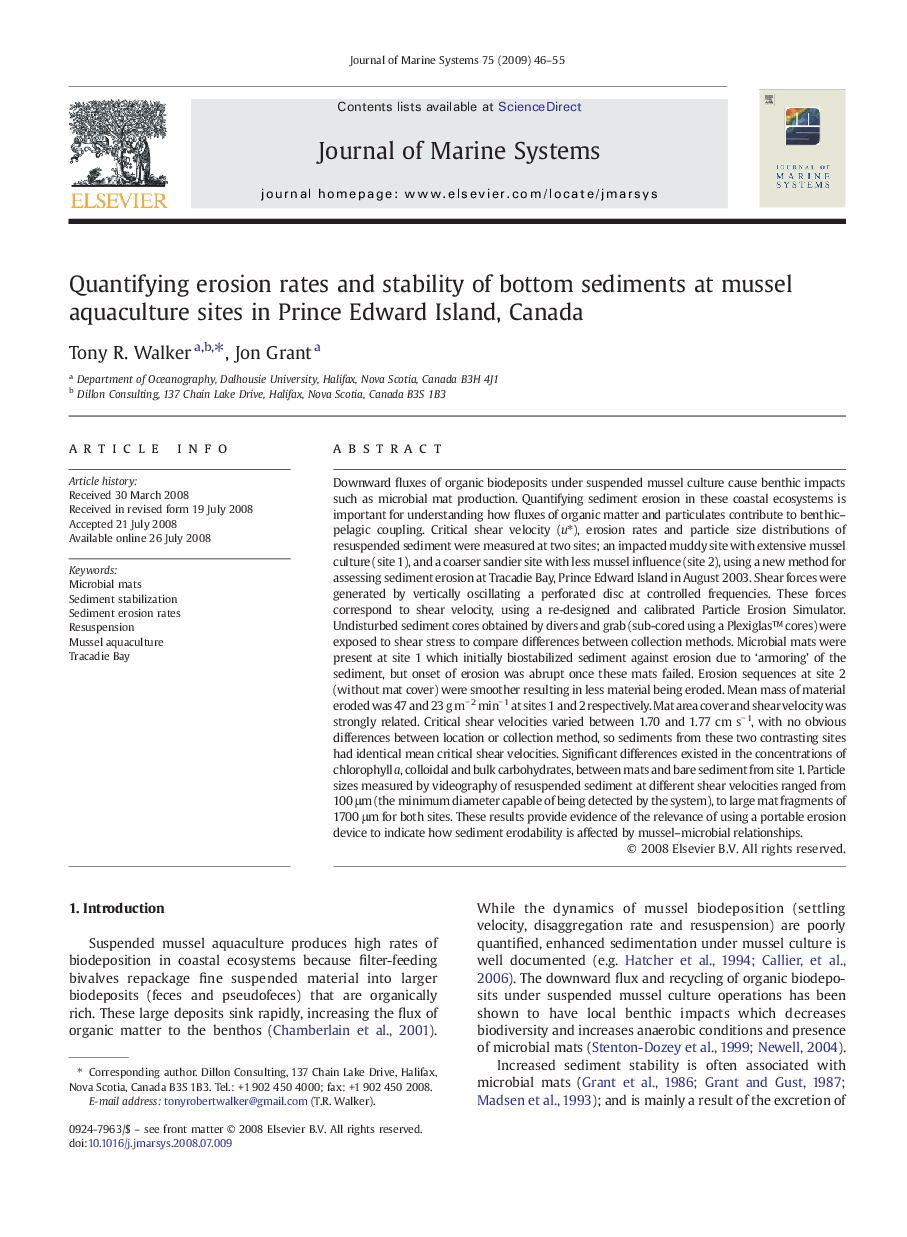| Article ID | Journal | Published Year | Pages | File Type |
|---|---|---|---|---|
| 4548905 | Journal of Marine Systems | 2009 | 10 Pages |
Downward fluxes of organic biodeposits under suspended mussel culture cause benthic impacts such as microbial mat production. Quantifying sediment erosion in these coastal ecosystems is important for understanding how fluxes of organic matter and particulates contribute to benthic–pelagic coupling. Critical shear velocity (u⁎), erosion rates and particle size distributions of resuspended sediment were measured at two sites; an impacted muddy site with extensive mussel culture (site 1), and a coarser sandier site with less mussel influence (site 2), using a new method for assessing sediment erosion at Tracadie Bay, Prince Edward Island in August 2003. Shear forces were generated by vertically oscillating a perforated disc at controlled frequencies. These forces correspond to shear velocity, using a re-designed and calibrated Particle Erosion Simulator. Undisturbed sediment cores obtained by divers and grab (sub-cored using a Plexiglas™ cores) were exposed to shear stress to compare differences between collection methods. Microbial mats were present at site 1 which initially biostabilized sediment against erosion due to ‘armoring’ of the sediment, but onset of erosion was abrupt once these mats failed. Erosion sequences at site 2 (without mat cover) were smoother resulting in less material being eroded. Mean mass of material eroded was 47 and 23 g m− 2 min− 1 at sites 1 and 2 respectively. Mat area cover and shear velocity was strongly related. Critical shear velocities varied between 1.70 and 1.77 cm s− 1, with no obvious differences between location or collection method, so sediments from these two contrasting sites had identical mean critical shear velocities. Significant differences existed in the concentrations of chlorophyll a, colloidal and bulk carbohydrates, between mats and bare sediment from site 1. Particle sizes measured by videography of resuspended sediment at different shear velocities ranged from 100 μm (the minimum diameter capable of being detected by the system), to large mat fragments of 1700 μm for both sites. These results provide evidence of the relevance of using a portable erosion device to indicate how sediment erodability is affected by mussel–microbial relationships.
